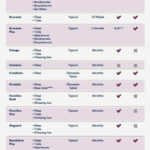When Shannon Walkley’s cat, Missy, went missing, she did what any concerned pet owner would do: she reached out for help. In her case, help came in the form of a somewhat unenthusiastic colleague, David Thorne, known for his… unique approach to workplace requests. What ensued was not just a simple poster design, but a comedic email exchange showcasing the perils of asking for a favor from the office’s resident master of sarcasm. This tale, originally unfolding in a series of emails, provides a laugh-out-loud look at office dynamics, pet-owner anxieties, and the art of passive-aggressive communication, all centered around the simple plea to find a Missing Cat.
Shannon’s initial email was straightforward and earnest. She needed a poster, A4 size, to photocopy and distribute around her suburb. Missy, her black and white, 8-month-old cat, had escaped, and Shannon was understandably distressed. She provided the essential details: Missy’s name, description, location of disappearance (Harper Street), and her phone number, along with the only photo she had.
David’s response was immediate, but far from sympathetic. He launched into a dramatic monologue, painting a picture of Missy’s tragic fate and Shannon’s supposed emotional turmoil. He questioned how she could even focus on work, given the dire circumstances of her missing cat, possibly “lying on the side of the road, her back legs squashed by a vehicle, calling out ‘Shannon, where are you?'” Despite feigning concern and exaggerating his workload, David agreed to “drop everything” to help with the urgent matter of the missing cat poster.
Shannon, perhaps accustomed to David’s peculiar communication style, kept her reply brief and focused, simply reiterating her worry and the urgency of the poster, as she had to leave work early.
David’s next email took an unexpected turn into a bizarre anecdote about boots, a bar fight, and a cat that, indirectly, caused someone to injure themselves and soil their pants. He claimed this story was to clarify he didn’t “dislike cats,” a statement Shannon hadn’t even made. Attached was the first poster design.
A movie-style poster for a missing black and white cat named Missy, presented as the first design iteration.
This initial poster was… unconventional. Presented like a movie advertisement, it featured a tiny photo of Missy dwarfed by dramatic text and empty space. Shannon’s reaction was immediate and to the point: “yeah thats not what I was looking for at all. it looks like a movie and how come the photo of Missy is so small?”
David’s explanation was equally absurd: “It’s a design thing. The cat is lost in the negative space.” This marked the beginning of a series of revisions, each more comical than the last, as Shannon’s simple request for a missing cat poster devolved into a battle of wills and design principles, according to David’s skewed perspective.
Shannon, understandably upset after a sleepless night of worry, expressed her emotional state and pleaded for a “proper” poster, requesting a bigger photo, fixed text, and color. Her vulnerability, however, seemed only to fuel David’s sarcastic fire.
David, feigning offense at Shannon’s “constructive criticism,” delivered a lecture on designer sensibilities, comparing her feedback to him offering unsolicited advice on her texting habits or Facebook usage. He then recounted a bizarre story about spending three days down a well “just for fun,” before condescendingly stating he had “amended and attached the poster as per your instructions.”
A “Wanted” style poster for Missy the missing cat, showcasing the second design iteration.
The second iteration was arguably worse than the first. Now resembling a “Wanted” poster, it was still far from the simple, helpful flyer Shannon needed to find her missing cat. Her response was understandably exasperated: “This is worse than the other one. can you make it so it shows the whole photo of Missy and delete the stupid text that says missing missy off it? I just want it to say lost.”
David’s reply was a masterclass in minimalist sarcasm. He simply sent back another poster.
A minimalist poster for Missy, the lost cat, showing the third design iteration with a focus on stark simplicity.
This poster was almost entirely blank, save for the tiny word “Lost?” and Shannon’s phone number. It perfectly encapsulated David’s passive aggression and his complete disregard for Shannon’s actual needs in her desperate search for her missing cat.
Shannon’s frustration reached its peak. She questioned David’s ability to even create the poster and reiterated her basic requirements: photo, the word “lost,” phone number, time and place of disappearance, and Missy’s name, emphasizing she didn’t want anything “like a movie poster or anything stupid.” She even appealed to his empathy, stating, “If it was your cat I would help you.”
David’s response took another detour into the absurd, revealing he doesn’t own a cat and recounting a story of neglecting a friend’s cat to the point of mailing it back in a poorly stamped box. He then compared caring for a cat to putting his mother in a care home after a stroke, in terms of effort required for feeding and cleaning waste. Despite this bizarre and inappropriate tangent, he attached another poster version, claiming it was “as per your detailed instructions.”
A poster for Missy, the missing cat, featuring basic information – the fourth design iteration.
This poster, while closer to a functional flyer, was undermined by the inclusion of an entirely wrong, orange cat. Shannon, understandably confused and increasingly desperate to find her missing cat, pointed out the obvious error: “Thats not my cat. where did you get that picture from? That cat is orange. You have a photo of my cat.”
David’s reply was callous and darkly humorous. He admitted he knew it wasn’t her cat but chose a “cute” one, suggesting Shannon might “get a better cat out of this” as Missy was likely dead. He then launched into another disturbing tangent about a dog with no hind legs and his hypothetical plans to exploit such an animal for profit.
Shannon, understandably ignoring David’s disturbing fantasies, simply pleaded, “Please just use the photo I gave you.”
David, finally relenting (somewhat), sent another poster.
A poster for Missy, the missing cat, now including a reward – the fifth design iteration.
This version finally used the correct photo of Missy and included the requested information. However, David, in a final act of sarcastic mischief, had added a “$2000 REWARD” to the poster. Shannon, clearly not offering a reward of that magnitude (or any reward at all), immediately asked for its removal, stating, “I didnt say there was a reward. I dont have $2000 dollars. Why did you even put that there? Apart from that its perfect can you please remove the reward bit.”
David, in his penultimate email, removed the numerical reward but left the word “REWARD” on the poster.
A poster for Missy, the missing cat, with the word “REWARD” still included – the sixth design iteration.
Shannon, pushed to her limit and out of time, made one last, weary plea to remove the reward mention completely. “Can you just please take the reward bit off altogether? I have to leave in ten minutes and I still have to make photocopies of it.”
David, in his final act of “helpfulness,” sent the final poster.
The final poster for Missy, the missing cat, after numerous sarcastic iterations.
This poster, while technically fulfilling Shannon’s basic requirements, still included the word “Reward,” albeit in a smaller font. Shannon’s final email, “Fine. That will have to do,” perfectly encapsulates the resigned frustration of someone who simply needed a missing cat poster but instead navigated a comedic minefield of office sarcasm.
This email exchange serves as a hilarious, if slightly painful, reminder of how simple requests can go spectacularly sideways when humor and differing communication styles collide. While Shannon’s primary concern was the urgent matter of her missing cat, David’s focus seemed to be on crafting the most creatively unhelpful responses imaginable. The saga of the missing cat poster is a testament to the power of workplace humor, even when it’s delivered with a generous dose of sarcasm and a complete lack of helpfulness.


